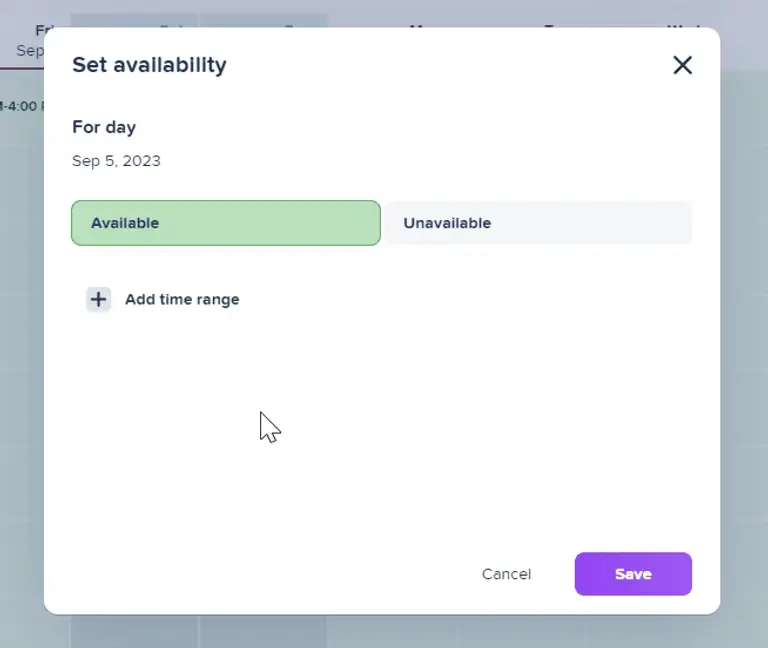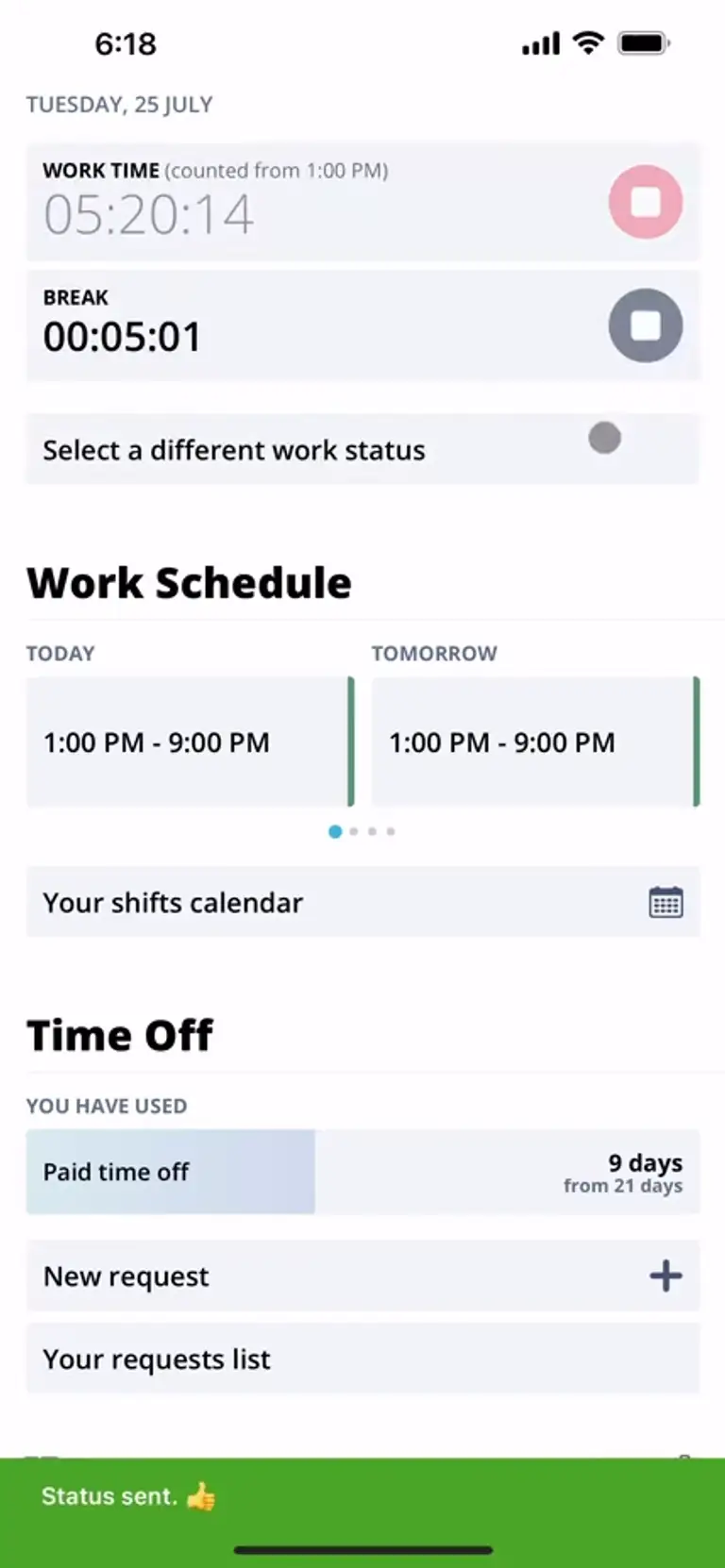Employee scheduling shapes how your team works and how people feel at the end of the week.
Done well, it prevents burnout and keeps everyone - full-time staff, part-timers, and managers - on the same page. Done poorly, it leads to missed shifts and rising costs you can’t ignore.
This guide walks you through what makes a schedule work.
From shift coverage and labor law compliance to team feedback and retention metrics, we break down how to evaluate your current scheduling approach and make it stronger, one decision at a time.
What is employee scheduling and why it matters
Employee scheduling is about planning who works and when. It includes managing shift swapping and adjusting for short notice changes. A good schedule supports both staffing needs and team well-being.
In operations, scheduling links to human resources tasks like payroll and compliance. Labor laws require accurate records and tracking overtime hours. Ignoring this can lead to fines or lost trust.
It also affects cost and retention. Poor assigned schedules or last-minute changes lead to no call no shows and burnout. A clear schedule helps you retain talent and control expenses.
Get Our Free Employee Schedule Template
Signs of effective employee scheduling
We know a schedule works when shifts are covered with no gaps. Managers can ensure proper coverage even during a swing shift or busy weekend at a retail store. There are fewer schedule conflicts, and workers can swap shifts without chaos.
There is also less absenteeism and fewer overtime hours because thanks to shift templates and historical data that predicts demand. When full time workers and part time workers feel heard, satisfaction rises.
Use employee scheduling software to collect actionable data
Tools like staff scheduling software make scheduling employees faster and less time consuming. You can track hours or allow employees to update availability and review historical data to plan ahead.
The software automates reports and flags gaps before they become problems. You can use it to create shift templates and match skills to shifts. This improves compliance with labor laws and keeps schedules fair.
By using these scheduling tools, it's possible to create schedules that meet business demands and ensure employees know their shifts well in advance.
Now, we’ve seen how fast scheduling errors stack up when you're relying on spreadsheets. That’s why we created Unrubble. It’s the base layer of how you should measure and improve the entire scheduling process.
With every shift assignment, Unrubble logs patterns and flags issues to keep track of hours worked. When you want to understand labor costs, you don’t guess- you pull up real data from the complete schedule. The scheduling system also helps you reduce overtime and spot gaps before they hit your bottom line.
The best part? You don’t have to manually create schedules from scratch. Unrubble's AI looks at future demand, employee preferences, and past attendance to create schedules that work for both the team and the business.

Why employee availability is central to scheduling evaluation
If you ignore availability, you lose control. Building around real availability makes creating employee schedules smoother and helps you ensure compliance with labor laws. It also keeps coverage stable. No more guessing if someone can work that swing shift.
These days, you can use tools that let people update their availability inside the app. They pick the days and times they can work, and you see it instantly when planning shifts.
This kind of flexibility supports well-being. When people feel in control of their time, you see higher employee satisfaction and fewer last-minute call-ins.
Download Our Free Employee Availability Form
Keep in mind that you can’t build a solid final schedule without knowing when your people are available. That’s where Unrubble makes it easy. Each team member sets their availability in the calendar, down to the hour if needed. You see it instantly when you schedule employees effectively.

We treat availability as a baseline, not a bonus. Because when you ignore real availability, you compromise service quality and burn through morale. Using Unrubble, you can align team schedules with actual capacity. That helps you stay compliant with predictive scheduling laws and reduce the chance of surprise absences.
And since the system highlights gaps visually, you can adjust before publishing. No more scrambling to fill eight hour shifts the night before.
Gather employee feedback to improve scheduling decisions
Schedules look good on paper, but paper doesn’t talk. That’s why you need to ask the team what’s working and what isn’t. Start simple:
Did you feel overworked last week?
Was your shift fair?
Would you take that schedule again?
Feedback shows what numbers don’t. Someone might be showing up on time but still feel stressed or unheard. Based on input, you can make actionable changes, such as reducing back-to-back late and early shifts or adjusting how you handle time off requests.
Download Our Free Employee Time Off Request Form
Asking isn’t enough, though. Acting on feedback is how you earn trust. It should be a regular part of how you plan and adjust employee schedules.
Check Our The Importance Of Employee Feedback [EXAMPLES]
You need to remember that every effective employee work schedule starts with feedback. If you don’t know what’s frustrating the team, you're making decisions in the dark. That’s why we recommend using Unrubble’s self-service tools. Team members can submit time off requests or comment on upcoming shifts. All from their phones.

The result? Fewer misunderstandings and better worker satisfaction overall.
Balance business needs and employee experience
This part takes work. You need to meet demand, but you also don’t want burned-out staff. That means looking at the week ahead and saying: can we meet our targets without pushing too far?
Use shared tools to build schedules together. Ask for availability, allow swaps, and share assigned schedules early. That gives everyone time to speak up if something doesn’t work.
Fair scheduling isn’t perfect scheduling. It’s about clear rules and adjusting when needed. That’s how you can keep operations running without losing good people.
Evaluate business metrics that reflect scheduling success
You can measure success using four numbers:
Absenteeism rate: how often people miss scheduled shifts
Overtime cost: where you’re spending more than planned
Productivity per shift: output based on staffing level
Schedule change frequency: how often you’re fixing things last minute
If those numbers climb, something’s off. Maybe shifts don’t match demand. Maybe employee satisfaction is low. Maybe you’re over-relying on a few key people.
By reviewing KPIs regularly, you reduce labor costs and spot recurring issues in how you create team schedules.
Fun fact: Unrubble’s AI even helps you adjust based on past trends and role-based needs. So when you create recurring schedules, they’re smarter each time.
Monitor and reduce employee turnover through better schedules
We’ve seen it ourselves. When people leave, schedules are often part of the story. Bad hours, short notice, unfair shift loads. Over time, those things push good workers out. But when you focus on creating employee schedules that are fair and stable, retention improves.
In exit interviews, be sure to ask:
Did your schedule work for you?
Did it affect your decision to leave?
The answers often show patterns, like missed time off requests or feeling left out of the scheduling process.
Use that feedback to change how your business operates. Offering scheduling flexibility, like input on preferred shifts or letting people swap shifts, will help you keep your best people. It’s not a big shift in tools. It’s a big shift in trust.
Conclusion
Evaluating how we schedule isn't something we do once. It’s ongoing. The way we schedule affects everything, from business operations to morale and employee satisfaction.
Regular reviews help you stay sharp. They show where you’re missing the mark and where you’re doing well. When you involve employees, you build schedules that last.
And when you get it right, people stay and performance improves.
Plus, with Unrubble, you can be certain that your employee schedules will be on top. Don't wait, try it completely for free now.



![What Does PEO Stand For In HR Administration? [2026 Guide]](/static/image?src=https%3A%2F%2Fcdnblog.unrubble.com%2Fpayload-unrubble-images%2FUnrubble-what-does-peo-stand-for-in-hr-administration-180x120.jpg&width=128&height=128&fit=cover&position=center&quality=65&compressionLevel=9&loop=0&delay=100&crop=null&contentType=image%2Fwebp)



